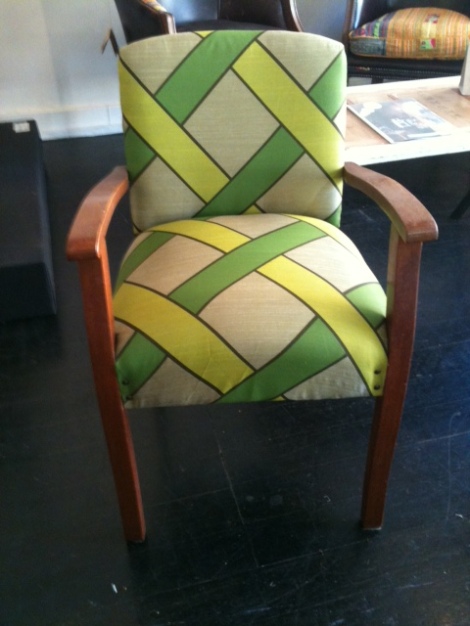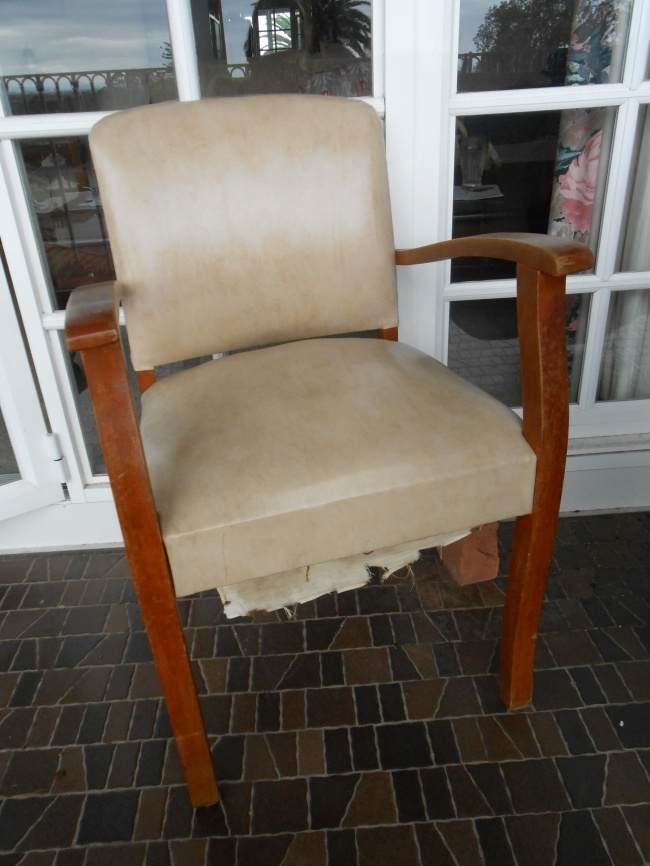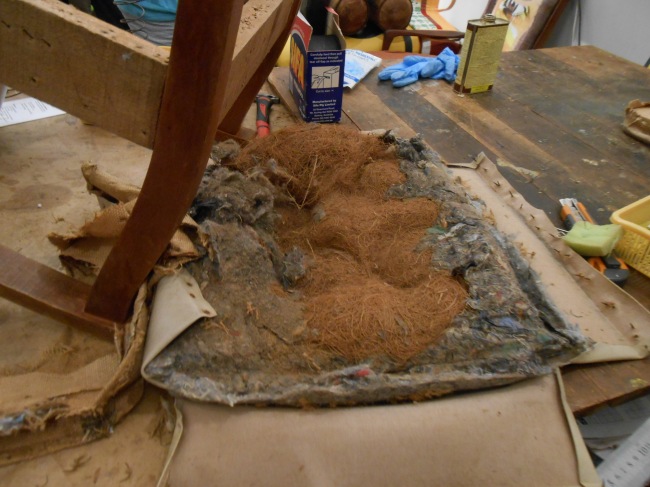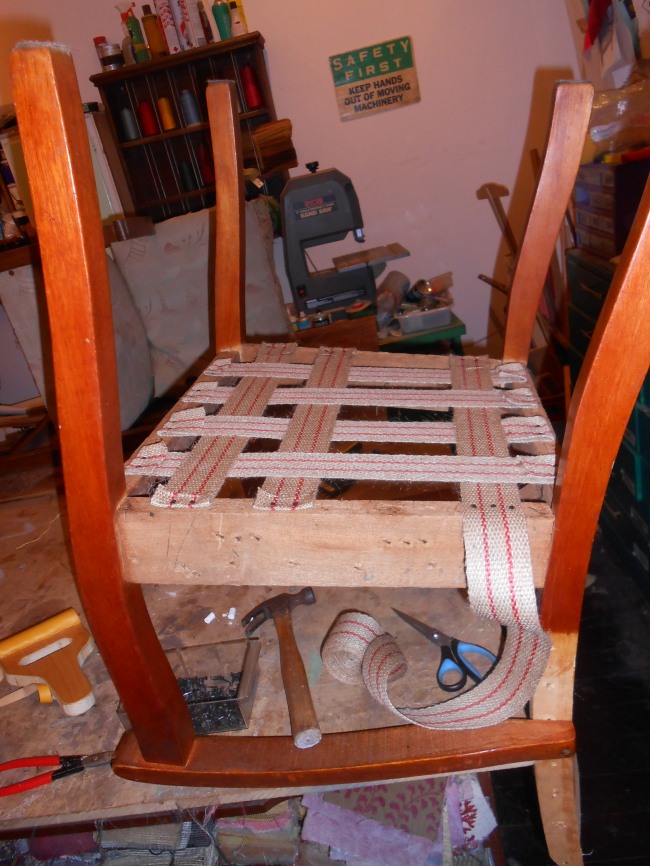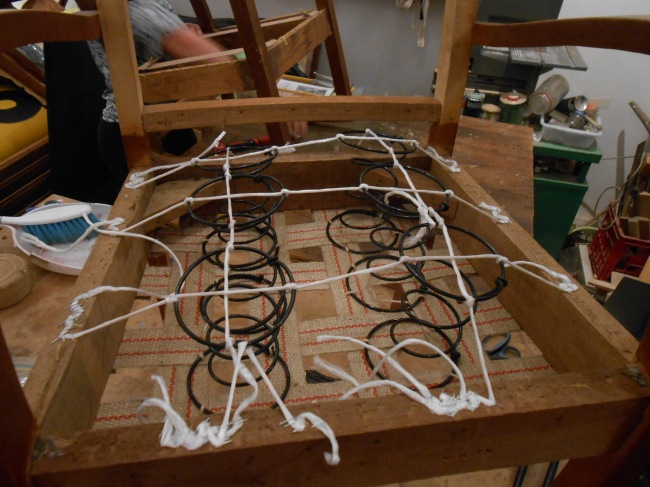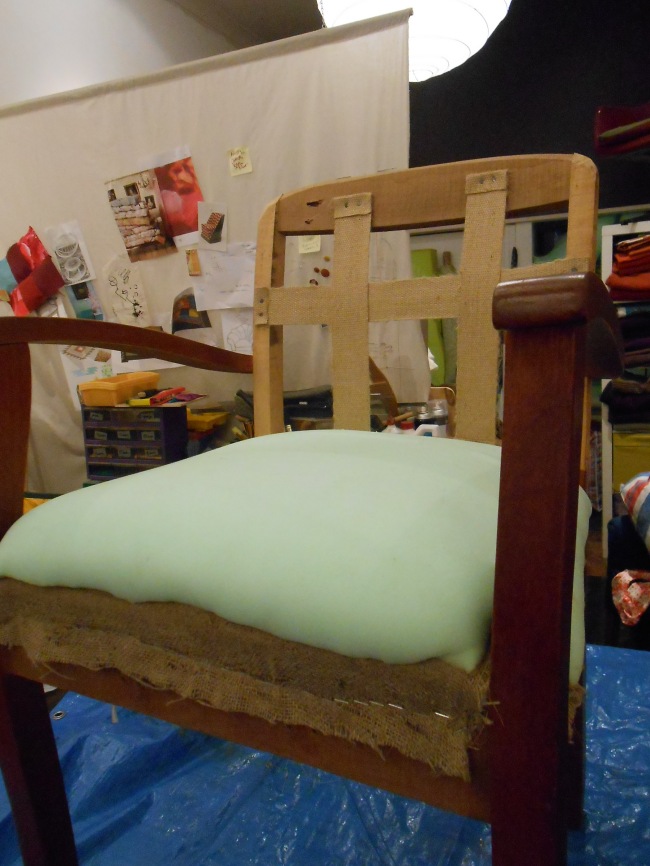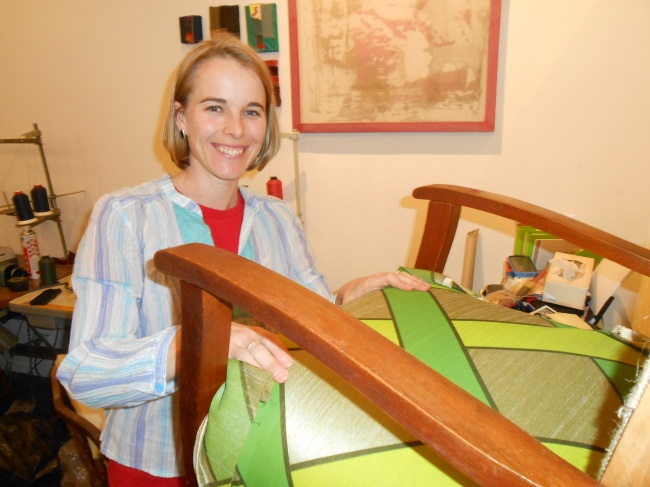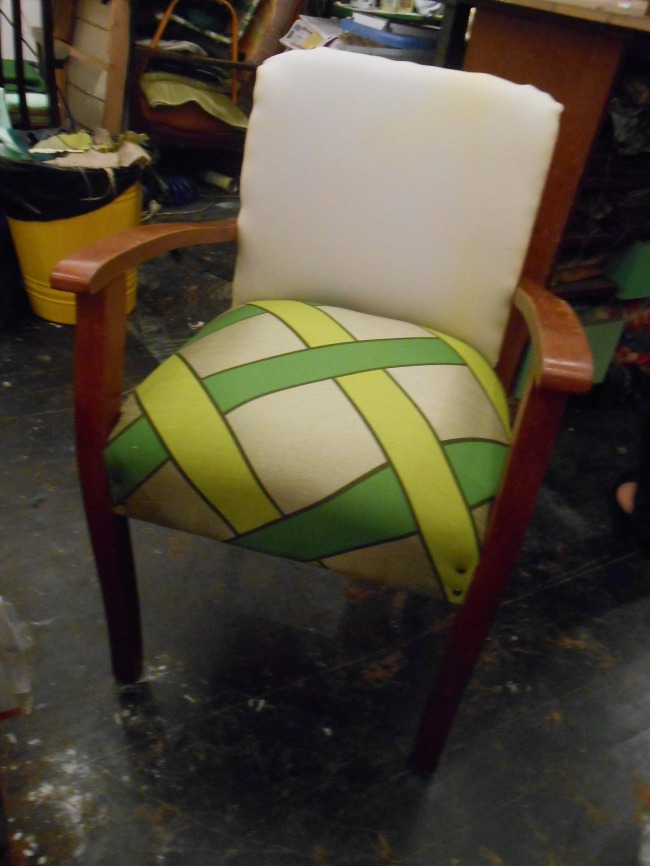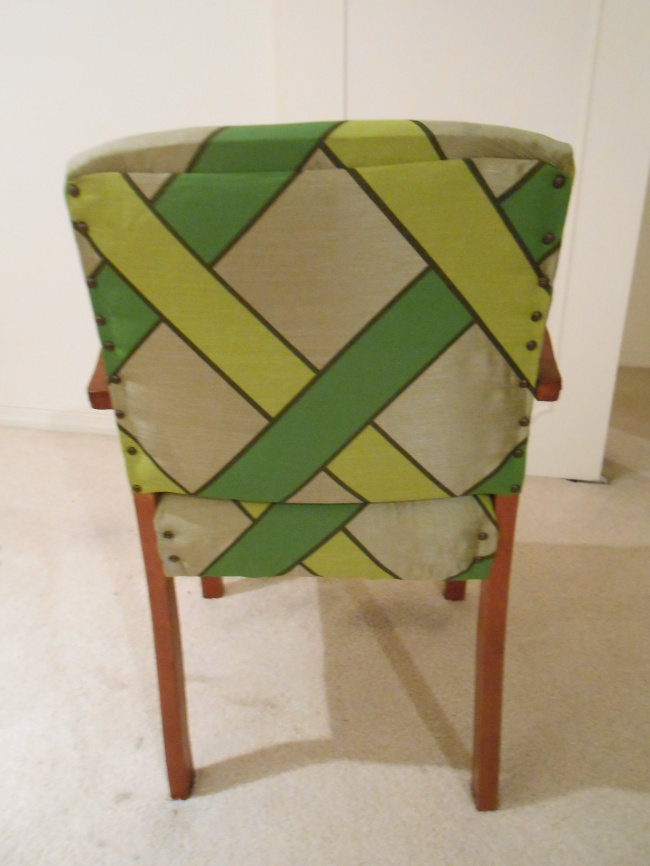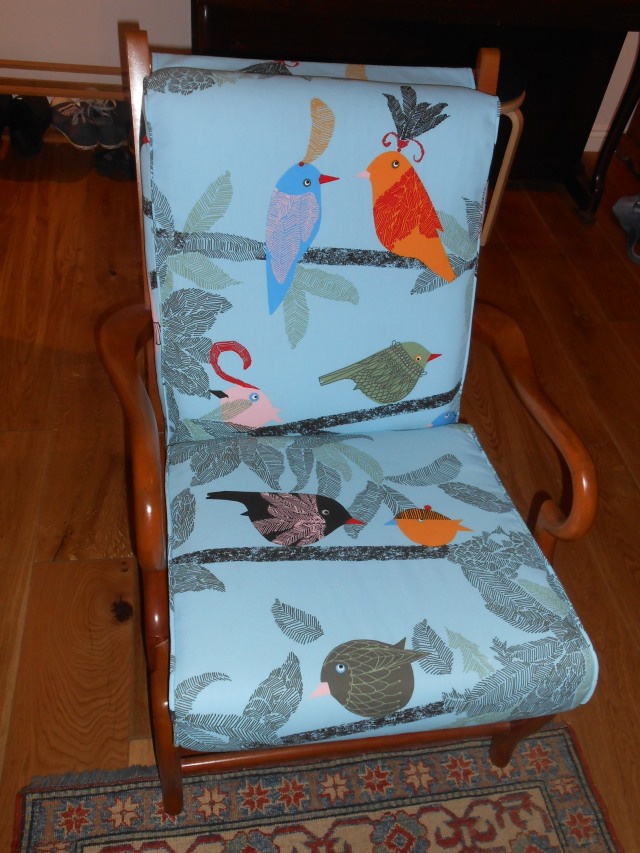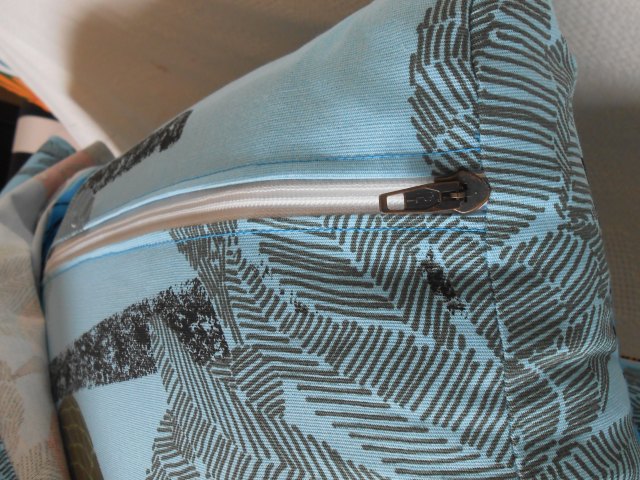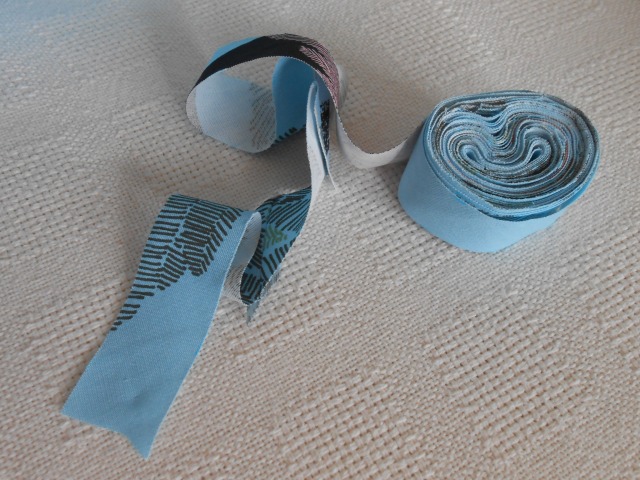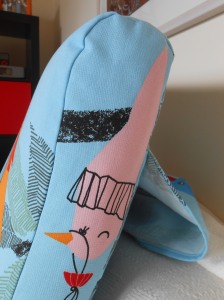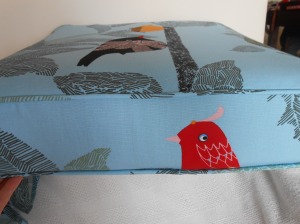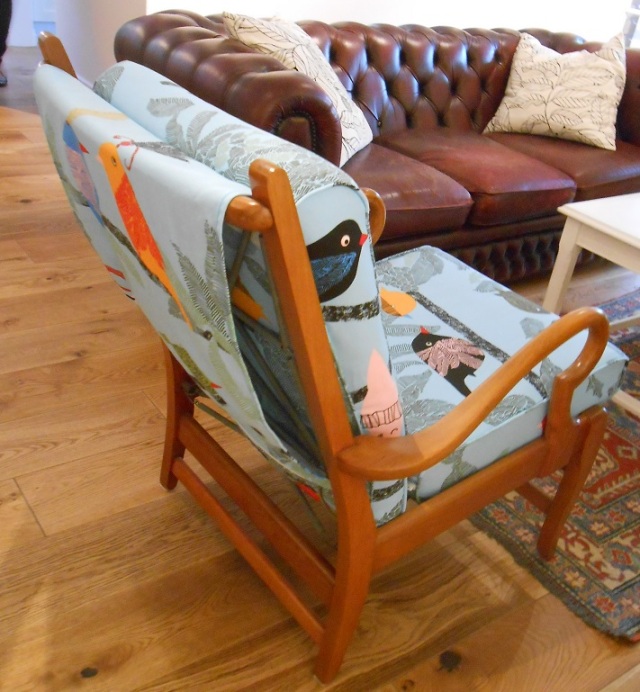
I just finished this dress and wore it to a pool party this weekend so I wanted to share it straight away! I bought a dress in this style years ago and I love it and wear it all the time during summer, so of course I’ve had a plan to copy the pattern and make one myself for a while now. On Christmas day the project finally began when, to the amusement of my in-laws, while the kids were building their new Lego projects and constructing their robots, I pulled my own project onto the coffee table where I copied my dress pattern and proceeded to cut out the fabric. The sewing had to wait until I got home.

It’s a pretty simple design with a front placket – I’ll need to add some buttons but haven’t done that yet, a back yoke, little strips around the arm hole for sleeves, pockets and a curved hem. I’m pretty happy with how it turned out and I’m sure it will become a summer staple.
The fabric is a rayon with large banana leaves in blues and greens that I got from Urban Rag in Wynberg. It shouts “SUMMER!” and it was relatively easy to work with and I’m enjoying wearing it.


Given that I drafted the pattern myself off of an existing dress, there were obviously no instructions and I had to research and remind myself on some of the tricks and techniques for the details. This all takes time and brain power and it makes me grateful for the detailed instructions provided on some of the great patterns I’ve been lucky enough to use.



Gotta love pockets in a dress! For the pockets, I remembered that the Mirri Jumpsuit had a very neat and secure pocket installation and so I copied their method. The piece of interfacing helps to add structure to the opening, however I made mine a bit wide so it adds bulk to the hips. So next time I need a narrower strip of interfacing! For the yoke construction I referred to this lovely clear tutorial from Charlotte Kan. I had forgotten that great ‘sausage’ step where everything gets squashed into the yoke pieces and you think “This can’t possibly work” and then you pull it out and “Ta duh!” it’s a perfectly sewn yoke with all the seam edges neatly inside. I love those sewing moments.


For the placket, this video from Taylor Nour helped guide me.
I used this same technique when I modified my son’s school sweatshirt to fit over his enormous head!



I’m very happy to add this fun summery dress to my wardrobe. Long live summer!
Fabric: Black rayon with banana leaf prints in blues and greens. From Union Rag
Pattern: Self drafted pattern off a store bought dress of mine.
Alterations: I tried to stick to the original but my hem is a bit shorter, the placket and sleeves are a bit wider and I haven’t added buttons…yet.
Do it again? I could see myself making another one of these in a different fun fabric.












